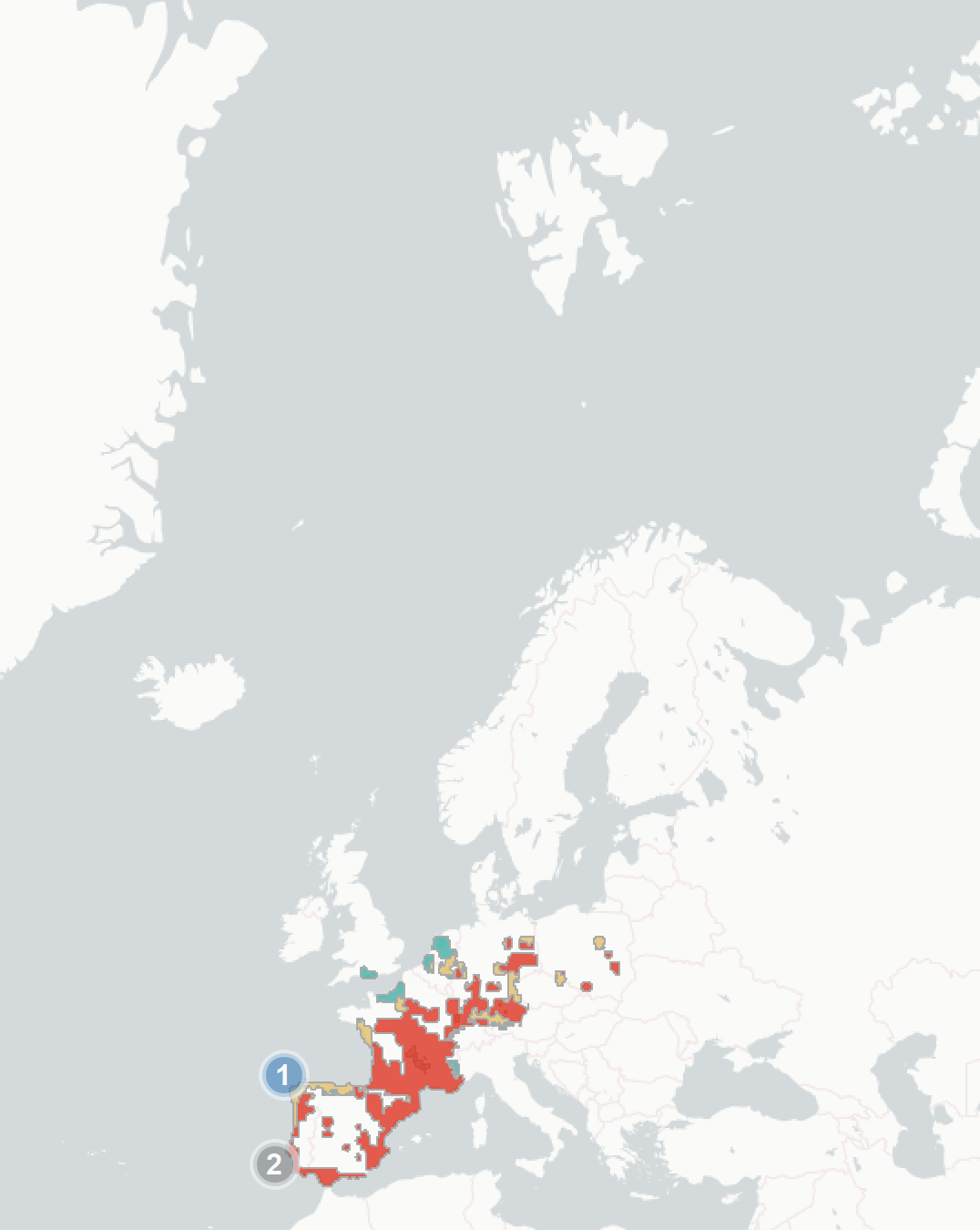Yellow-legged Gull (Larus michahellis): vulnerability to climate change
Evidence for exposure
Potential changes in breeding habitat suitability:
-
Current breeding area that is likely to become less suitable (65% of current range)
-
Current breeding area that is likely to remain suitable (21%)
-
Current breeding area that is likely to become more suitable (14%)
Current impacts to Yellow-legged Gulls attributed to climate change:
-
Neutral Impact: Changes in prey availability have caused species to swap prey
Predicted changes in key prey species:
-
Key prey species are likely to decline in abundance on the south coast of Portugal
Sensitivity
-
This species has a long generation length (>10 years), which may slow recovery from severe impacts and increases population extinction risk
Adaptive capacity
-
Very varied and opportunistic diet, including fish, invertebrates, mammals, refuse and offal, bird eggs and chicks. Yellow-legged gulls have been observed to change their primary prey species if one source becomes unavailable.
-
Under the right circumstances, yellow-legged gulls can establish new colonies. While they tend to have some site fidelity (especially adults), they have been observed to colonise new areas over time if new areas are particularly high-quality or if previous area is disturbed.
